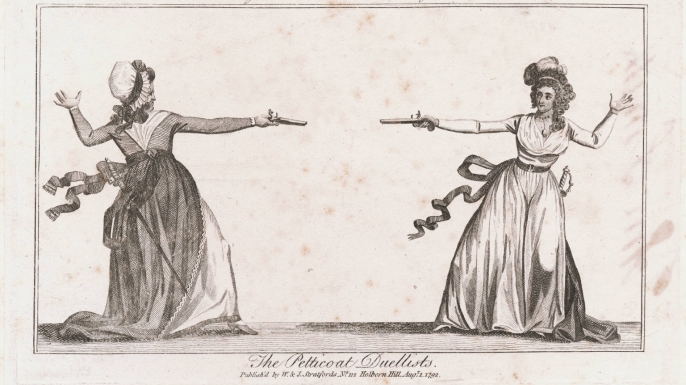via Big Think by Robby Berman

Two biofilms (SÜEL LAB @ USCD)
They’re supposed to be the simplest of creatures. Bacteria are prokaryotes: they’re single-celled organisms whose cells even lack a membrane-enclosed nucleus. And yet, biologists at UC San Diego recently discovered something truly startling: Bacterial communities cooperate when food sources are limited. “What’s interesting here is that you have these simple, single-celled bacteria that are tiny and seem to be lonely creatures, but in a community, they start to exhibit very dynamic and complex behaviors you would attribute to more sophisticated organisms or a social network,” said molecular biologist Gürol Süel of UC San Diego’s Division of Biological Sciences.
Continue reading
=============================
New materials allow 2.8l/day of solar-powered desert water-vapor extraction
via Boing Boing by Cory Doctorow

Researchers from MIT, UC Berkeley, Lawrence Berkeley, and King Abdulaziz City for Science and Technology published a paper in Science describing a solar-powered device that uses a new type of metal organic framework (MOF) to extract up to three litres of water per day from even the most arid desert air.
Continue reading
=============================
This way to the ginger pop shop! The day I stepped into the pages of the Famous Five
via the Guardian by Lucy Mangan

Inspiration for Five’s HQ … Lucy and Blyton’s creations, with Corfe Castle in the distance. Photograph: Jim Wileman for the Guardian
Corfe Castle in Dorset has, as 11th-century castles often do, an amazing history. One of the earliest castles to be built with stone. Mentioned in the Domesday Book. Twice besieged during the civil war. One of the last Royalist strongholds in the southeast until it finally fell to parliamentary forces. But most important of all – and the reason I am here today, clambering up the mound on which its ruins stand – is that at some point in the early 1940s Enid Blyton paid a visit. She rechristened it Kirrin Island, pushed it out to sea, and made it the headquarters of her most beloved creation: the Famous Five.
Continue reading
=============================
Oregonians to vote on whether to end constitutional ban on duels between public officials
via Boing Boing by Rob Beschizza

Move over, Florida! Oregon may supplant you as America's best source of mesmerizingly bizarre violent confrontations, if voters there overturn a constitutional ban on duels.
Continue reading
=============================
Death of a dictator
via The New Statesman by Mary Beard
How Caesar’s murder set the template for political assassination.

The assassination of Julius Caesar on 15 March 44BC (“the ides of March” by the Roman system of dating) is the most famous political murder in history. Caesar had recently been made “dictator for life”, and he was killed in the name of “liberty” by a group of men he counted as friends and colleagues. In the aftermath, the assassins issued coins with a design specially chosen to celebrate the deed and press home the message: it featured the memorable date (“EID MAR”), a pair of daggers and the image of the small hat, “the cap of liberty”, regularly presented to Roman slaves when they were granted their freedom. This was liberation on a grander scale, freeing the Roman people from tyranny.
Continue reading
=============================
Graphene May Be the Key to Drinkable Ocean Water
via Big Think by Robby Berman

Graphene lattice (UNIVERSITY OF MANCHESTER)
Graphene is absolutely amazing stuff, the lightest, strongest stuff we know of. According to the University of Manchester:
- It’s ultra-light, yet immensely tough.
- It’s 200 times stronger than steel, but it is incredibly flexible.
- It’s the thinnest material possible as well as being transparent.
- It’s a superb conductor and can act as a perfect barrier – not even helium can pass through it.
=============================
The 5 weirdest moons in 5 minutes
via Boing Boing by Mark Frauenfelder
Our friend Ariel Waldman is a space enthusiast extraordinaire. She made a video about “the five weirdest, oddball, mysterious moons in our solar system”.
Continue reading and watching
=============================
A Short Analysis of Euripides’ Helen
via Interesting Literature
Helen is not the most famous of Euripides’ plays, but it is one of the most curious – and it deserves close analysis and study. The play was first performed in 412 BC at that year’s City Dionysia. In summary, the plot of Helen turns on an old conspiracy theory first put forward by the ancient historian Herodotus: that ‘Helen of Troy’ was a mere phantom conjured by Hera, and that the real wife of Menelaus spent the duration of the Trojan War in Egypt, having been taken there by Hermes and kept safe out of harm’s way. (This is the basis of H. D.’s modernist epic poem Helen in Egypt (New Directions Books).) The Greeks and the Trojans both go to war over what is, effectively, an illusion. The goddess Hera is responsible for the phantom Helen and, therefore, the cause of the Trojan War: she’s seeking revenge on mortals over something called the Judgement of Paris.
Continue reading
=============================
Watch MC Escher make art in this short documentary
via Boing Boing by Bob Beschizza

M.C. Escher: Adventures in Perception (1971) is a 20-minute Dutch documentary about the artist and includes scenes of him working in his studio.
Continue reading for more information and a link to the video.
=============================
David Jones – the 20th century’s great neglected genius
Thomas Dilworth’s biography, a lifetime’s work, finally does justice to this deeply spiritual, original artist and poet
via Arts & Letters Daily: A.N. Wilson in the Spectator

Self-portrait
When Stravinsky visited David Jones in his cold Harrow bedsit, he came away saying, ‘I have been in the presence of a holy man.’ Other admirers included T.S. Eliot (his publisher) and the Queen Mother (who wrote asking if she could buy some of his work). Harold Bloom, Kenneth Clark and W.H. Auden were all not merely admirers, but passionate in their admiration. Auden thought Jones’s long Eucharistic poem ‘The Anathemata’ the ‘finest long poem written in English this century’.
Continue reading
No comments:
Post a Comment